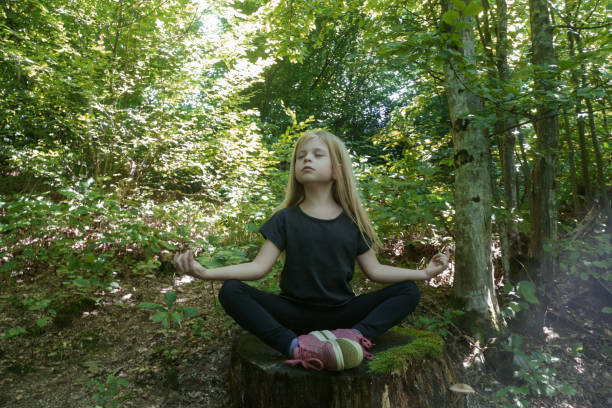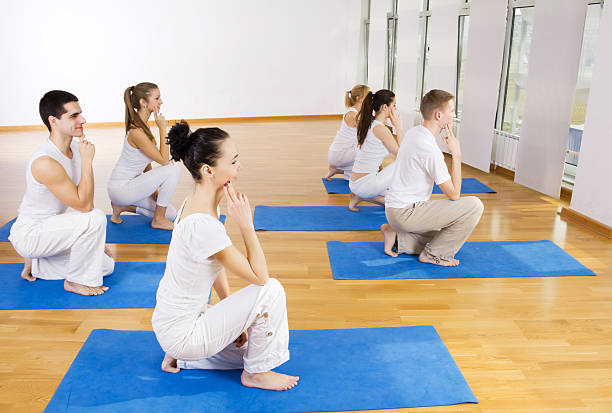
For yoga students and teachers, participating in teacher training is often a life-changing experience. You certainly will learn more about the postures and how to get the most out of your practice.
Many people don’t know that they can also learn a lot about yoga philosophy and join a community with like-minded individuals who are interested in their personal growth. I have seen students form the most beautiful friendships and have had the privilege of witnessing some heartfelt changes.
Three types of teacher training
200-hour
Studios can offer three different types of teacher education. The 200-hour teacher training is similar to a bachelor’s degree from a university. It can be a well-rounded course that provides information on postures and sequencing and some feedback about your teaching. This is to get you out there and teach.
300-hour
The teacher training of 300 hours is equivalent to a Master’s Degree at a University. It’s time to refine your sequencing and deepen your understanding of how your body works.
You may learn more about yoga and its many aspects, depending on the training. This course is for yoga teachers and yogis who want to delve deeper into the vast universe of yoga.
500-hour
It is the equivalent of a student earning their undergraduate and graduate degrees in the same school, at the same department. The 200-hour and 300-hour programs are either combined or separated into a single program.
Some studios require teachers to pass both the 200 and the 300 exams under their school to qualify to teach there. This might be a great idea if the school has a large number of respected teachers. However, it won’t guarantee you a spot in the schedule.
Some students choose to attend separate schools for their 200-hour and 300-hour training. This allows them to benefit from different strengths. Some students decide to stop after a 200-hour training to work on their teaching skills and then return to take a training of 300 hours.
It is similar to students who finish their undergraduate degree and then choose to work for a while in the real world before returning to study for their master’s.
What is the best option?
You will not be fully prepared to teach if you do not receive training. You can improve your teaching abilities by focusing on your practice. Just like your yoga practice, the ability to teach a class develops over time. It takes repetition.
Yoga Alliance, a non-profit organization that helps regulate yoga schools, has updated its requirements and increased hours of practice teaching for both 200- and 300-hour programs. You can start your yoga classes if you feel your program doesn’t offer enough hours of practice teaching.
You can’t become a great yoga teacher by attending a school. It would be best if you put into practice what you have learned.
No program can guarantee you a job in teaching. Unfortunately, there is no guarantee of employment. You can create teaching positions in your community if there aren’t many opportunities.
One of my students was unable to find work in LA, so she made arrangements with a park nearby to provide free yoga. She began to make money, and her classes became popular. One student was unable to find work at local studios, so she taught yoga to homeless people and now works for a downtown non-profit.
Yoga is gaining in popularity, but many people don’t practice it or have no access to it. Bring your gift to the untapped audience.
Should you only study at one school and earn a 500-hour credential in one style?
You may benefit by investing your time and energy in the 200-hour program if you align your values and your interests with those of the school. The majority of 200-hour programs barely scratch the surface when it comes to explaining backbends and inversions.
In the same philosophy, you will progress from general knowledge to refined wisdom. You might want to explore this method if you enjoy the teaching style and approach of the school.
Pick a teacher/style, and stick with it. Too many styles/teachers can confuse a yogi.” This advice was often given to me when I was a young teacher. It is true. Another piece of advice is to try as many styles and teachers as you can, then make a choice and stick to that teacher.
Consider spending time on general study if you have access in your community to many different teachers and styles. Your inner wisdom will guide you as you practice.
You may want to consider a 300-hour yoga training to complement your existing knowledge if your 200-hour course did not include the areas that you are interested in or if you feel you need more strength.
What if I don’t have many options where I live?
Consider looking outside your hometown for training if you have limited options. We can increase our knowledge by traveling to study. We gain a broader perspective when we interact with different people.
Yoga teachers serve their students better when they are able to incorporate a wide range of perspectives into a class. It improves our communication with a wide range of people. We don’t want to be a yoga teacher who is only able to describe Trikonasana in one way.
You will always be a student.
It is important to understand that no matter what direction you take in your yoga studies, your work does not end when you receive your 500-hour certification. Yoga teachers who achieve respect and “notoriety” are those who invest more time, energy, and money in their studies.
We love learning as much as we do practicing. We are more interested in sharing our knowledge than becoming famous or bossing others around. Relax a little about your choice, and know that it will take time to correct any shortcomings.
Remember, the more you focus on your practice and the joy that it brings you, the greater the desire of others to share your vibration. It is important to enjoy learning about yoga. Not only will it benefit you, but it can also help those around you.


